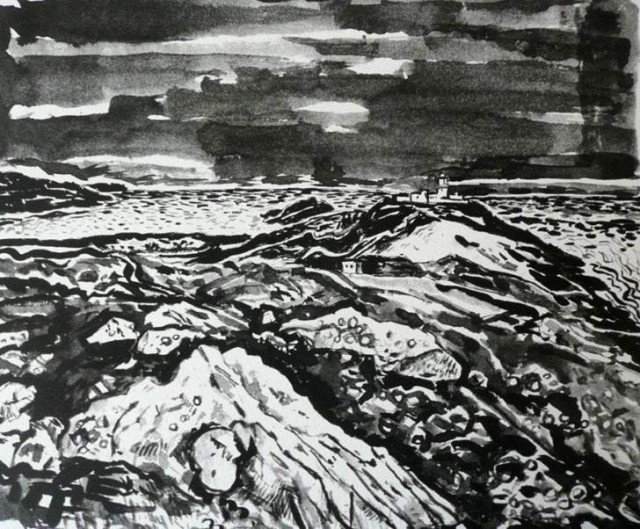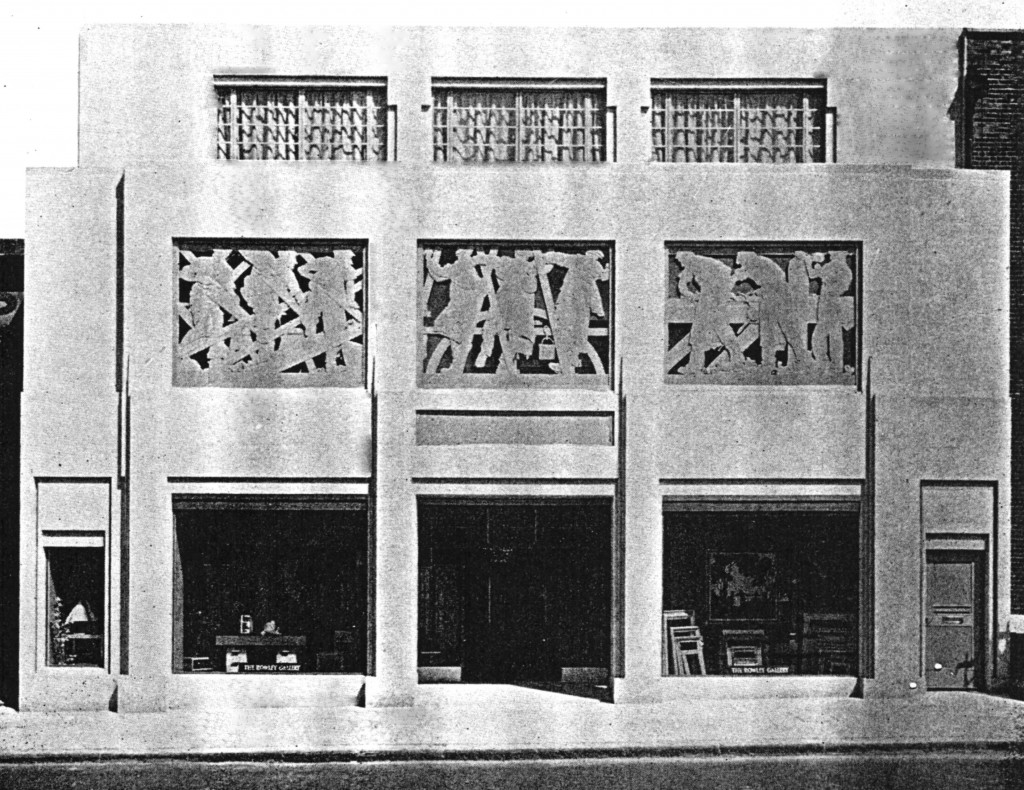Lithography is a bit different from other print processes. Although I am interested in printmaking despite being a painter, I am no expert. Linocuts and woodblocks depend on the image being raised, and etching depends on the image being recessed. Lithography happens on a flat surface like a lithographic stone or zinc plate and depends on the antipathy between grease and water. The way a mark is made on a stone or a plate is the same as in a drawing or painting, you don’t need an etching needle or engraving tool. The mark is made with a greasy crayon or ink, and then the print is created on a press where alternate use of dampening the plate or stone with water and then applying ink, which attaches only to the greasy drawing, allows the image to be printed. Continue reading “Strumble Head”




